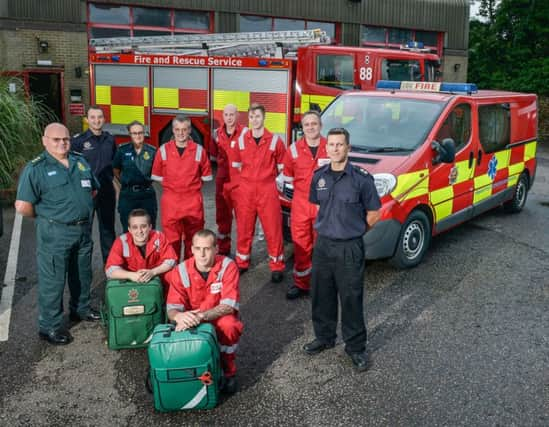Lifesaving pilot scheme trialled by Leighton firefighters


Bedfordshire Fire and Rescue Service (BFRS) is working with East of England Ambulance Service Trust (EEAST) to attend 999 calls to cardiac arrests in a pilot into co-responding with ambulance paramedics.
The pilot – which is also being trialled across the other side of the county in Biggleswade – has been set up because successfully treating cardiac arrest patients greatly depends on getting help to them as quickly as possible.
Advertisement
Advertisement
During the pilot, when a 999 call is made to the ambulance service about a cardiac arrest in the Leighton area, both paramedics and firefighters will respond on blue lights. In some cases, firefighters will arrive first and start providing lifesaving emergency treatment immediately.
Twenty Fire and Rescue Services around the country are already successfully working with their local ambulance services. Bedfordshire, Hertfordshire, Suffolk, Cambridgeshire and Norfolk are taking part in this pilot with EEAS that will run for six months.
The fire service says the move with not affect its ability to attend fires, road traffic collisions and other serious incidents in these areas, but adds another lifesaving service to those they already provide.
The fire service is able to do this because fire stations are located around the county close to the communities they serve and because of success in reducing fires during the past ten years.
Advertisement
Advertisement
Firefighters are already trained to provide medical care and use defibrillators at other emergencies such as fires and road traffic accidents, so this arrangement builds upon existing skills.
They will not convey casualties to hospital, but offer emergency medical care at the scene until an ambulance arrives.
Ian Evans, head of operations at BFRS said: “We have fire stations located around the county to ensure we can reach any fire or other incident as quickly as possible.
“However, over the past ten years our fire prevention campaigns have significantly reduced the numbers of fires and we have the capacity to use our firefighters to deal with other life-threatening incidents in our community.
Advertisement
Advertisement
“Firefighters have volunteered to take part in this pilot, which is an evolution of the work we do every day. We are not turning firefighters into paramedics -– we are making the most of their existing lifesaving skills and our ability to mobilise to incidents quickly in support of EEAST. We are not replacing paramedic services and will not be transporting casualties.”
Rob Ashford, Acting Director of Service Delivery for EEAST, said: “We already work closely with 999 colleagues and this is an extension of our partnership to help patients with an immediately life-threatening condition.
“Building on the collaborative work already undertaken through community first response (CFR), public access defibrillation and RAF co-response schemes, we also believe co-response schemes can add significantly to our ability to respond to patients quickly and start basic life support. We know that the quicker someone starts cardiopulmonary resuscitation (CPR) and gets a defibrillator to a patient in cardiac arrest the better chance they have of surviving.
“The ambulance service will continue to send clinicians to such patients as a top priority, but the best thing for the patient is to get someone trained in basic life support to their side as quickly as possible.